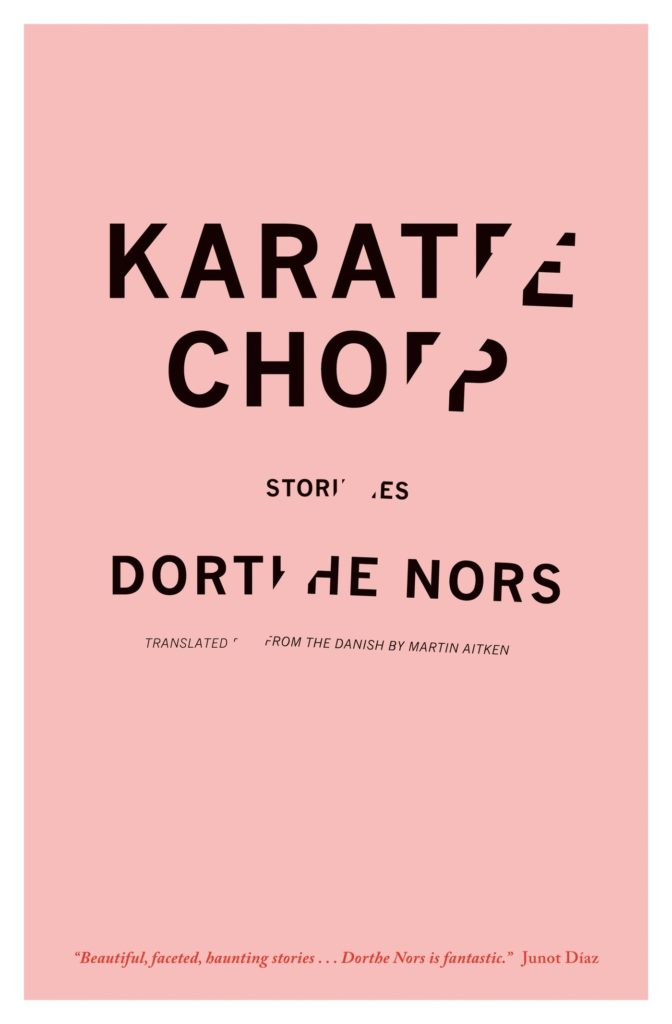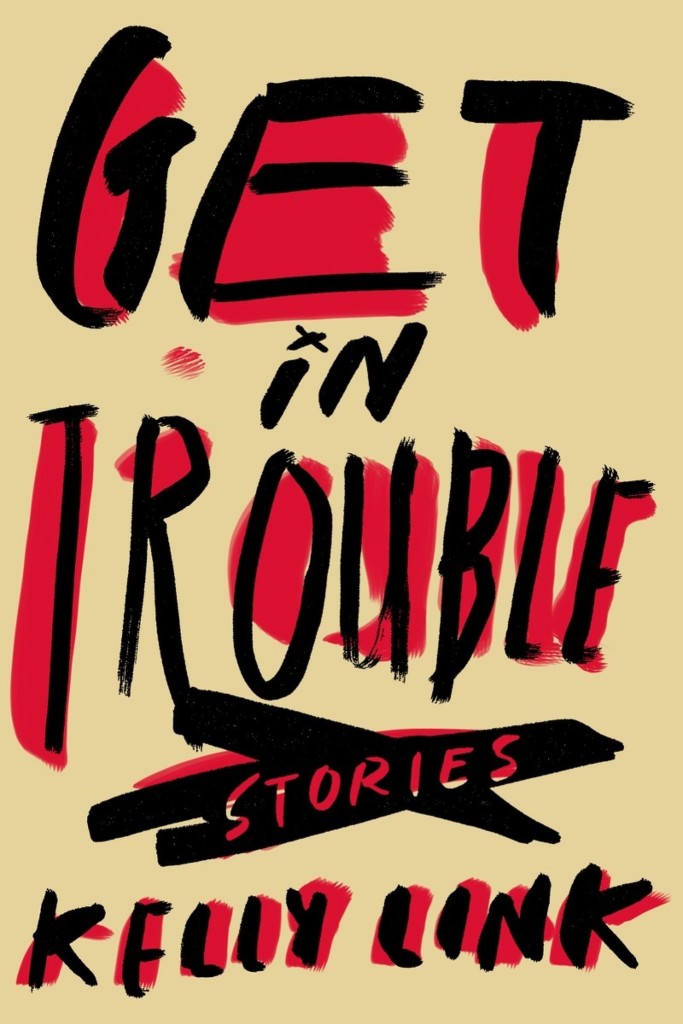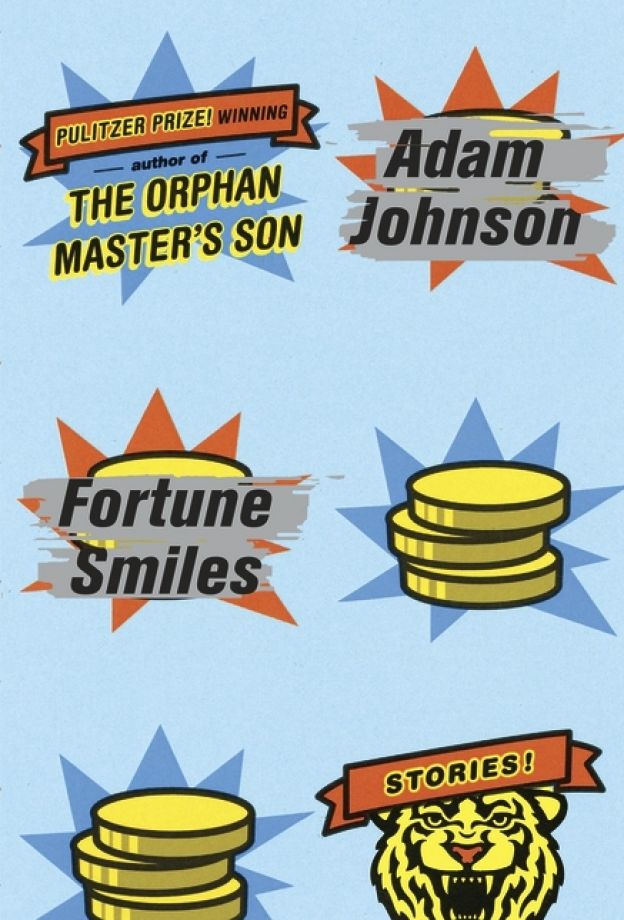Friends, it’s true: the end of the decade approaches. It’s been a difficult, anxiety-provoking, morally compromised decade, but at least it’s been populated by some damn fine literature. We’ll take our silver linings where we can.
So, as is our hallowed duty as a literary and culture website—though with full awareness of the potentially fruitless and endlessly contestable nature of the task—in the coming weeks, we’ll be taking a look at the best and most important (these being not always the same) books of the decade that was. We will do this, of course, by means of a variety of lists. We began with the best debut novels of the decade, and now we’re back with the best short story collections of the decade—or to be precise, the best collections published in English between 2010 and 2019.
The following books were chosen after much debate (and several rounds of voting) by the Literary Hub staff. Tears were spilled, feelings were hurt, books were re-read. And as you’ll shortly see, we had a hard time choosing just ten—so we’ve also included a list of dissenting opinions, and an even longer list of also-rans. Feel free to add any favorites we’ve missed in the comments below.
***
The Top Ten
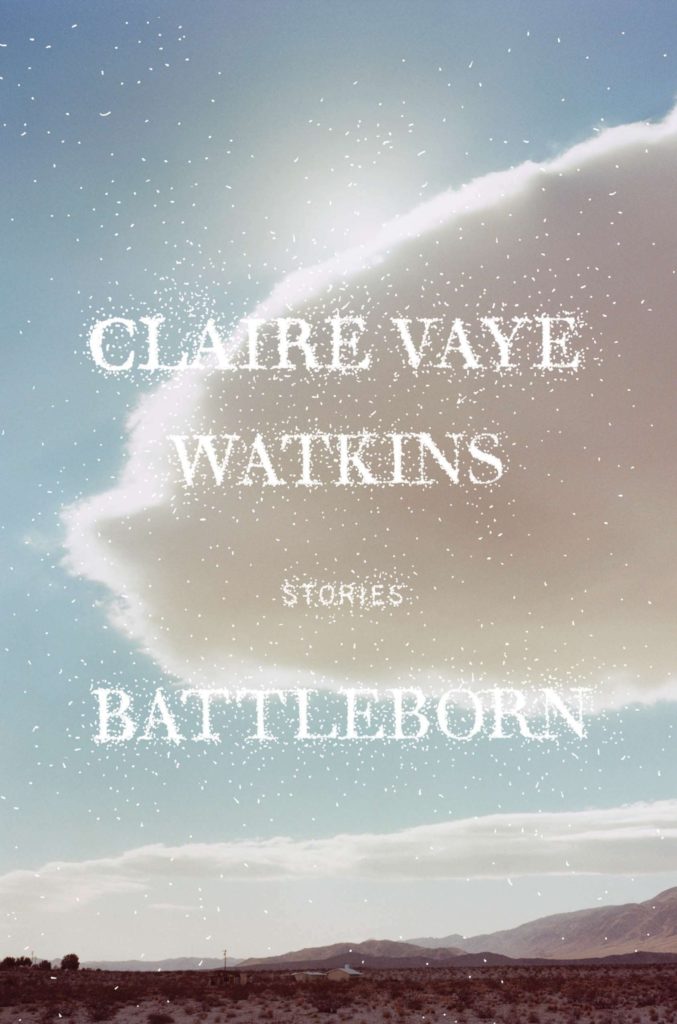 Claire Vaye Watkins, Battleborn
Claire Vaye Watkins, Battleborn
2012
Claire Vaye Watkins’ searing, Nevada-set debut collection—which includes a sixty-page novella that takes place during the 1848 Gold Rush and a dazzling, devastating opening tale in which Watkins audaciously blends fiction, local history, and myth with the story of father’s involvement in the Manson Family during the late ’60s—is as starkly beautiful, as lonesome and sinister and death-haunted, as the desert frontier through which its stories roam. There’s an enviable fearlessness to Watkins’ writing, a refusal to look away from the despair that lies within the hearts of her lost and weary characters, to give them tidy trajectories or tidy resolutions. Her landscapes are exquisitely drawn, full of lush sensory detailing and characters stalked by the sorrows and violence of their pasts, the parched desperation of their presents. In one particularly aching story, a man finds a bundle of letters amid the strewn wreckage of a car crash, and proceeds to carry on a therapeutic, and increasingly revealing, one-sided correspondence with their owner, onto whom he superimposes the identity of a desperate neighbor he killed decades previous. In his reverie he remembers how nature marked the season it happened: “Late that Spring, a swarm of grasshoppers moved though Beatty on their way to the alfalfa fields down south. They were thick and fierce, rolling like a thunderstorm in your head.” It’s remarkable to come across a debut collection in which the voice, the vision, is so fully formed, so assured, but that’s what Watkins has achieved with this exceptional work. –Dan Sheehan, Book Marks Editor
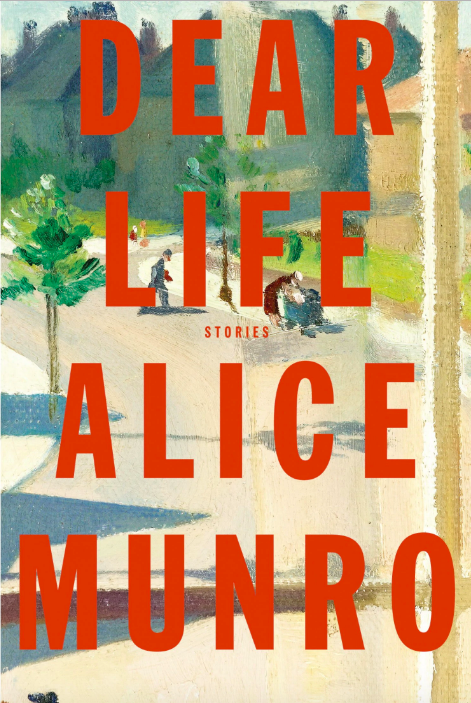 Alice Munro, Dear Life
Alice Munro, Dear Life
2012
Well, this one’s not really fair. I mean, any Alice Munro collection published in any given period of time has to automatically be on the list of best collections of said period. (I guess what I really mean is that it’s not really fair to other writers that Munro is such a goddamn genius.) Most of the stories in Dear Life were previously published in The New Yorker, Harper’s, and Granta; they all display Munro’s uncanny ability to take a lifetime—or even generations of a single family—and shrink it into a thirty-page text—not by spinning out event after event, but by delivering a character so textured, and a series of moments so precise, that we can’t help but feel we know all about them. These stories and characters are not flashy, there’s little in the way of high concept; it’s simply that Munro knows people, and represents them so accurately, so wisely, and so humanely, that you can’t help but be moved. This is despite the fact that, as Michiko Kakutani pointed out, with age, Munro has gotten a little bit sharper in her portrayals of the common man. “Though Ms. Munro has not become judgmental exactly, she seems more focused on the selfishness, irrationality and carelessness people are capable of.” The collection also includes a few semi-autobiographical sketches—“autobiographical in feeling, though not, sometimes, entirely so in fact”—we are told. She writes: “I believe they are the first and last—and the closest—things I have to say about my own life.” They too are wonderful.
Munro was awarded the Nobel Prize in literature the year after the publication of Dear Life, in 2013; the Swedish Academy called her a “master of the contemporary short story.” No shit. –Emily Temple, Senior Editor
 George Saunders, Tenth of December
George Saunders, Tenth of December
2013
It can be hard to tell what historical era you’re actually living through, as its happening. Is this the post-9/11 era or the Trump era? Or maybe we’re really in what will one day (I hope) be labeled the Misinformation Era. Honestly, though, this is probably the “we had a chance to save the planet but did nothing” era, in which case, there probably won’t be historians around in 200 years to call it anything… How ever you choose to see the last decade of life on Planet America, it is likely some version of it appears in George Saunders contemporary classic, Tenth of December.
This collection is as remarkable for its range of emotional registers as it is for its formal variety. From the aching, class-conscious pathos of “Puppy,” in which two families intersect around the possible purchase of a dog, to the grim, neo-futurist allegory of “Escape From Spiderhead,” in which clinical drug trials go way too far, Saunders sets his characters down in a series of bespoke narrative dioramas, a wry and loving god forever suspicious of the disappointments his creations engender, yet unable to resist setting little boobytraps to see how they’ll react. With a tenderness and generosity that catalyzes satirical clarity rather than the cloudiness of sentimentality, Saunders lets his characters puzzle their way through the confines of their own fictional lives, as wounded and joyous and magnificently broken as any among us, the living.
It is a dark timeline, in which reality has outpaced satire, but at least it is a world we have seen before, in the short stories of George Saunders. –Jonny Diamond, Editor in Chief
 Clarice Lispector, tr. Katrina Dodson, ed. Benjamin Moser, The Complete Stories
Clarice Lispector, tr. Katrina Dodson, ed. Benjamin Moser, The Complete Stories
2015
It’s complicated to include a “complete stories” collection in our list for the best of the decade, not least because Clarice Lispector has been considered Brazil’s greatest writer more or less since 1943 when her revolutionary debut novel, Near to the Wild Heart, was first published (she was 23). But in 2012, publisher New Directions began releasing new translations, from four different translators, of Lispector’s novels, a concerted effort to bring her remarkable work to the attention of an English-speaking readership. In 2015, the novels were followed by these “Complete Stories”—86 in all, originally published between 1952 and 1979. Translated by Katrina Dodson, the collection received dazzling reviews, establishing Lispector firmly in America’s consciousness as one of the preeminent writers of the last century.
A Clarice Lispector story is not easy to describe; they are feminist and absurdist, charting familial drama, love affairs, and existential surrealism, wheeling through the preoccupations and modes of twentieth century literary experimentation with a disorientating facility—and disorientation is the point. “Coherence is mutilation,” a character reflects at one point, “I want disorder”—an urge that Lispector understands and brings to life with more power than almost any writer I can think of, and perhaps with more relevance and urgency in these times than in any other in the four decades since her death. –Emily Firetog, Deputy Editor
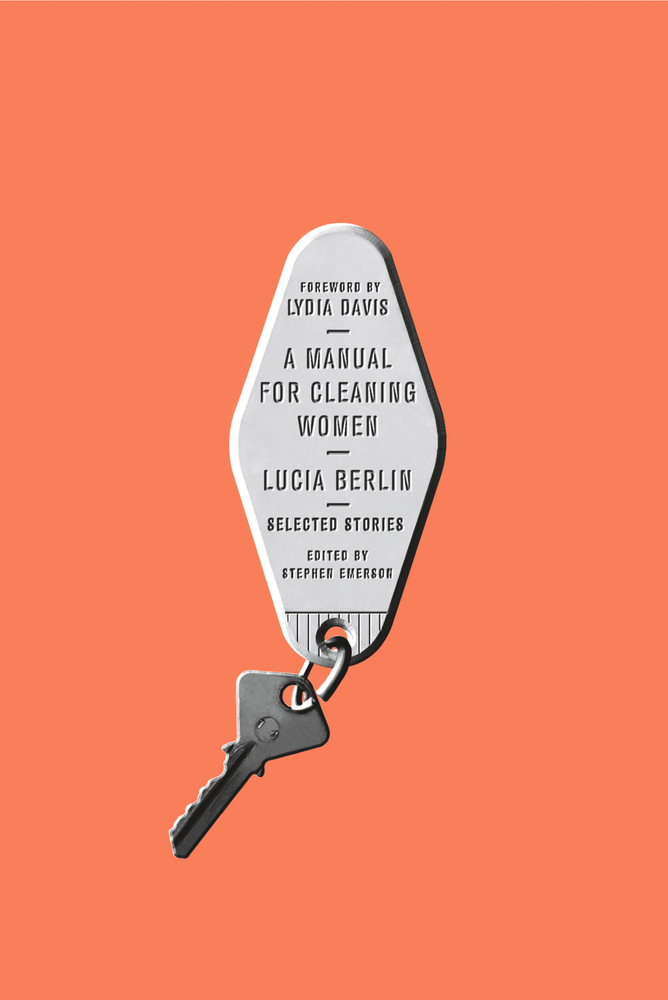 Lucia Berlin, ed. Stephen Emerson, A Manual for Cleaning Women
Lucia Berlin, ed. Stephen Emerson, A Manual for Cleaning Women
2015
Is it all that remarkable that a short story collection by a writer who died in 2004 should, in fact, be one of the best collections of the decade that followed? Aside from the earthy brilliance of Berlin’s A Manual for Cleaning Women itself, the fact of its phenomenon—at least among those who consume multiple story collections a year—speaks to a great gap in our literary culture. It won’t ever be possible to fully account for the stories and novels that went unheralded and untaught in a literary culture geared toward canonizing the anxieties and insights of well-to-do white guys, but at least in Berlin’s posthumous collection—and its frank rendering of women’s lives—we have a small correction to the record.
When Berlin writes of last-chance bus depots or cheap borderland hotels or third-rate nursing homes she does so minus the literary tourist’s appropriative bravado, that triumphalist wild boy tick that seems to define so much of the fiction of her male contemporaries. For Berlin, these are not places we pass through, to mine for epiphany or authenticity, but rather the locations in which life happens: as one reviewer put it, the stories in this collection are “all beginnings and middles with no ends,” and one only wishes Berlin had lived long enough to see the beginning of her own renaissance. –Jonny Diamond, Editor in Chief
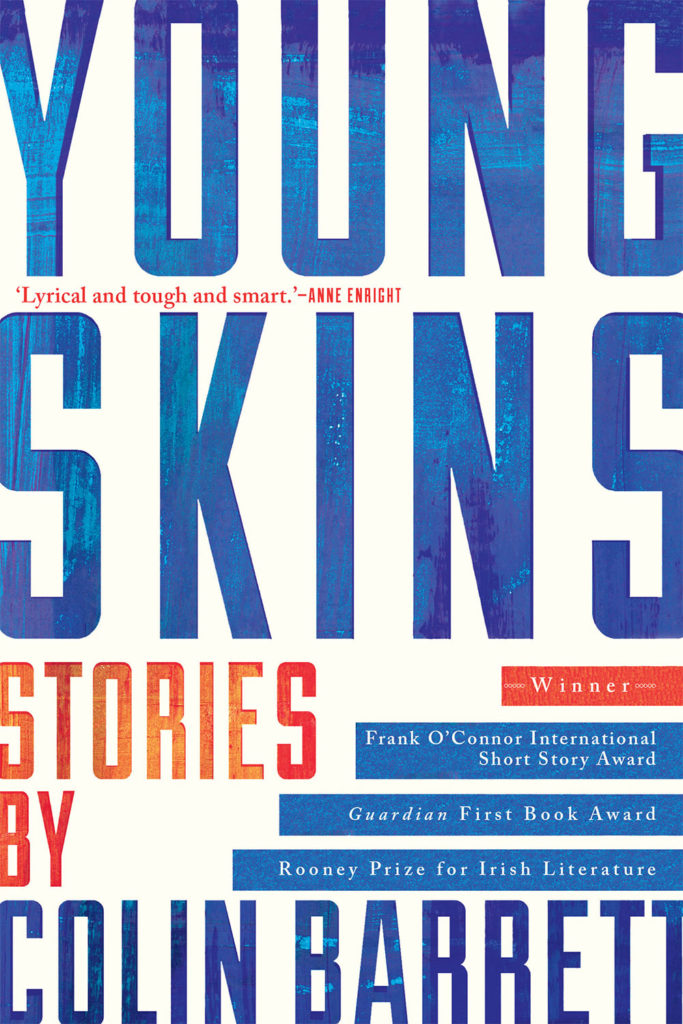 Colin Barrett, Young Skins
Colin Barrett, Young Skins
2015
I first read Colin Barrett’s stories when I worked at The Stinging Fly magazine and press in Dublin. The editor had been working with Barrett for a couple of months on a few stories, and we were publishing one in an upcoming issue. I distinctly remember finishing the copy edit and turning to the editor and simply saying, “Holy shit.” When we put out Colin’s collection Young Skins in 2013, it wasn’t long before Grove Atlantic picked it up in the US, and it was published here in 2015. In the vein of William Faulkner’s Yoknapatawpha County, its seven stories all take place within the limits of the fictional town of Glanbeigh on the west coast of Ireland. Barrett’s characters live hard lives in the aftermath of Ireland’s Celtic Tiger years, an economic boom time that happened to other people but the effects of whose abrupt end are felt everywhere. There is drink and there are drugs and moments of shocking violence. There is the steady inescapability of failure and loss, and every so often there are moments of soaringly lyrical writing. Barrett’s mastery of the short story form won him the Guardian First Book Award, the Frank O’Connor International Short Story Prize, and a National Book Foundation 5 under 35 honor. It’s a collection that’s striking for its audacity to be a debut—completely assured of voice, of character, and of a setting that is utterly realized. Thus, we’re calling it one of the best short story collections of the decade. –Emily Firetog, Deputy Editor
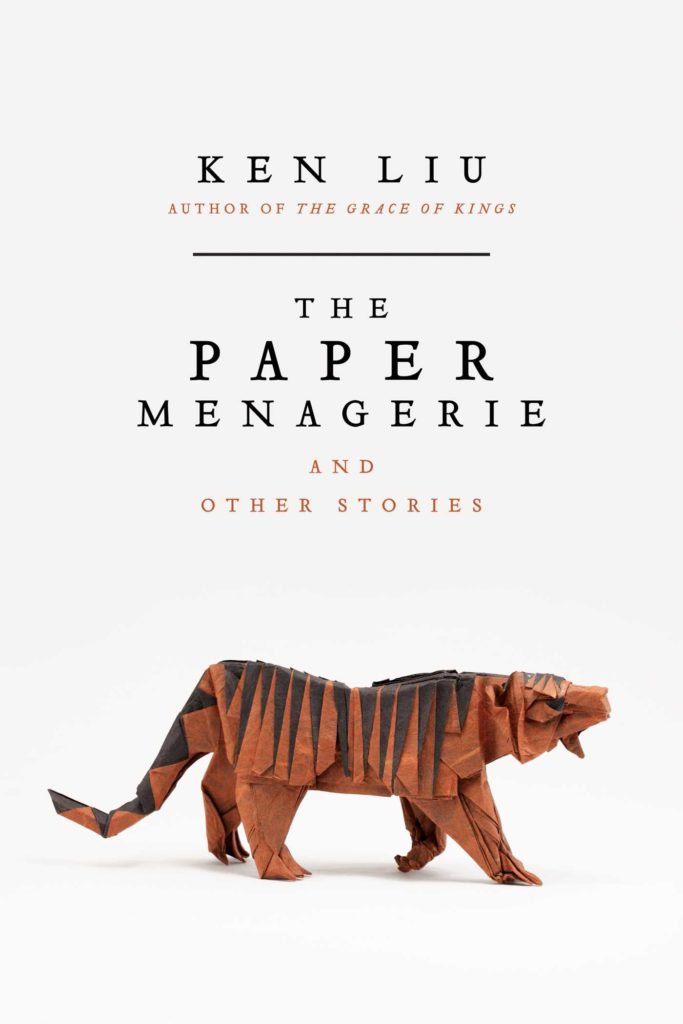 Ken Liu, The Paper Menagerie
Ken Liu, The Paper Menagerie
2016
“Whatever has been lost in translation in the long journey of my thoughts through the maze of civilization to your mind, I think you do understand me, and you think you do understand me,” Ken Liu writes in the preface to The Paper Menagerie and Other Stories, a collection in which metaphors are fully unwound into tangible corollaries. The Paper Menagerie gathers some of Liu’s most celebrated stories, summaries of which do little to convey the scope of his imagination. Take, for example, “State Change,” a bleak office rom-com set in a world where people’s souls are physical objects—an ice cube, a cigarette pack, a beech tree branch—that must be protected from mundane things like hot weather and nicotine addiction. “Good Hunting” begins as a folktale about a demon-hunting father-son duo in a small Chinese village and ends with a critique of British colonialism and modernity in Hong Kong, as well as a surprising reversal of misogynistic narrative tropes. The titular story, which won Nebula, Hugo, and World Fantasy Awards, shows Liu in top form. The protagonist, born of a Chinese immigrant mother and white father, grows up loving the origami animals that his mother brings to life with her breath, only to spurn his Chinese heritage as he grows older. Though not all the stories here are quite as moving as this one, The Paper Menagerie cemented Liu as one of the decade’s most inventive (and popular) short story writers, adept at infusing his shapeshifting work with a touch of Charlie Kaufman-esque hyperreality and Eastern Asian folklore. –Aaron Robertson, Assistant Editor
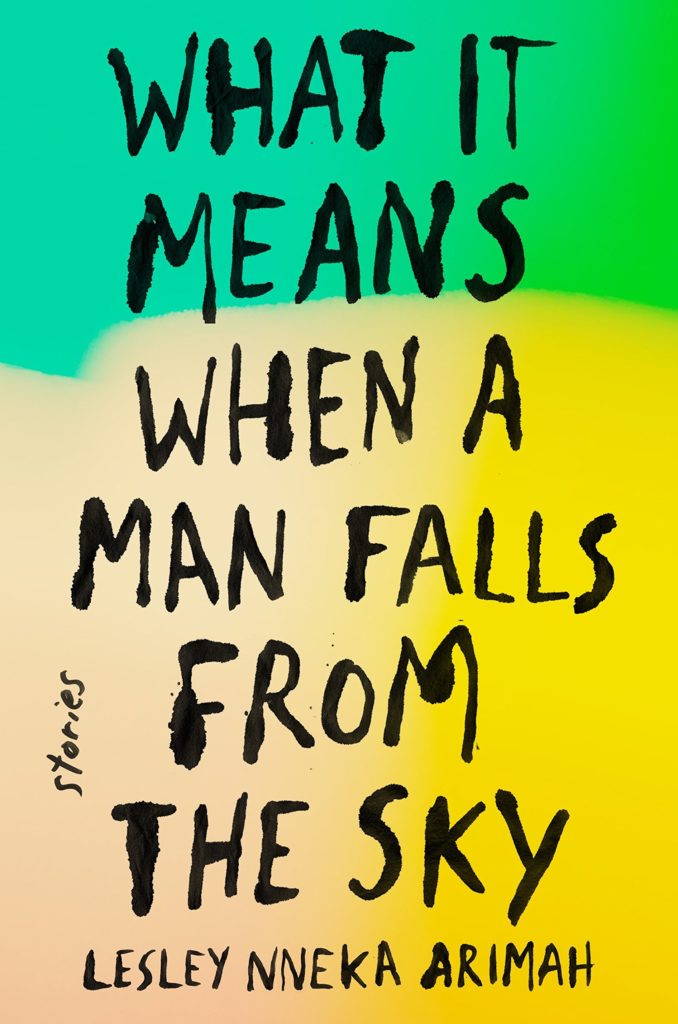 Lesley Nneka Arimah, What It Means When a Man Falls from the Sky
Lesley Nneka Arimah, What It Means When a Man Falls from the Sky
2017
Lesley Nneka Arimah calls herself a pessimist. Thus unfolds her collection of short stories, What It Means When A Man Falls From The Sky, most of which are set in Nigeria and utilize dystopian themes to reveal the bleak consequences of humankind’s ruthlessness towards the natural world as well as fellow humans. The title story, for example, is about a world ravaged by climate change, where a group of scientists try, by the creation of a “formula,” to undo what has been done and make it so the human body can defy gravity. The flaws in this hubristic, quick-fix mindset are immediately revealed when the eponymous man falls from the sky. Another story in the collection “What Is A Volcano?” reflects a similar human urge to play god, drawing on myth and literally presenting feuding gods who argue over each other’s primacy. Arimah blends magical realism and fable into her narratives to illuminate as she says, the “baser instincts” of humankind, to watch humanity “turn grotesque.”
Arimah tackles the pressures of womanhood, familial relationships, and Nigerian culture, including its religious and social expectations. “Glory” is about a girl of the same name, bearing the pressure of her family to achieve greatly; “Who Will Greet You At Home” is about a woman so desperate for a child and her mother’s blessing that she risks weaving one out of hair: “Everybody knew how risky it was to make a child out of hair, infused with the identity of the person who had shed it. But a child of many hairs? Forbidden.” Despite the variety of its incarnations, this collection portrays a variety of hauntings, often literal in the form of ghosts or dolls coming to life, and others figurative, as in a father’s fear for his daughter out in the world. Underlying all of Arimah’s narratives ultimately though, is emotion: the ways in which we show or suppress love and affection and display vulnerability. Being as we are each an entire mind away from another, grief accompanies not only big events but even everyday instances of a missed chance at getting across to someone we care about what we really mean and want. –Eleni Theodoropoulos, Editorial Fellow
 Carmen Maria Machado, Her Body and Other Parties
Carmen Maria Machado, Her Body and Other Parties
2017
“[P]erhaps you’re thinking,” the narrator of “Resident,” a short story by Carmen Maria Machado in Her Body and Other Parties, muses, “that I’m a cliché—a weak, trembling thing with a silly root of adolescent trauma, straight out of a gothic novel.” The reference to being in a gothic story is intriguingly apt. On the one hand, “Resident” deliberately conjures up a gothic atmosphere of dread that feels like it could have been taken from many other stories in the genre; on the other, though, it says something about Machado’s haunting collection as a whole. Many of the stories in Her Bodies and Other Parties contain echoes of the images and themes that so often constellate gothic literature and “the gothic” as a mode or atmosphere of writing: ghosts, beheadings, violence, trauma, claustrophobic environments, a pervading sense of unease or uncertainty. But while many classic tales of gothic literature—with a few exceptions—have portrayed women as tropes at best and monsters at worst, Machado’s stories beautifully and poignantly focus on what it means to be a woman, to inhabit a woman’s body, in a gothic landscape that, for all its ghosts and mysterious plagues, feels all too terrifyingly, traumatically like the world we live in. Women are harassed in the stories, as much by people as by the unsettling atmospheres around them. From the title itself, Machado makes it clear that collection will focus on women’s bodies–and her deployment of the dispassionate-sounding “parties” as the title’s second half suggests the cool detachment with which male harassment, for instance, so often involves equating women’s worth to their bodies. Yet “parties” can also suggest festivity, and her women, for all the horror around them, have moments of happiness and release, too. Her Body and Other Parties is a masterful reimagining of what the gothic can do and be, creating a world in which the tremendous weight of being a woman is chillingly palpable throughout nearly all of the stories. It’s a powerful collection that surprised me in the best of ways, and I think it will continue to for a long time to come. –Gabrielle Bellot, Staff Writer
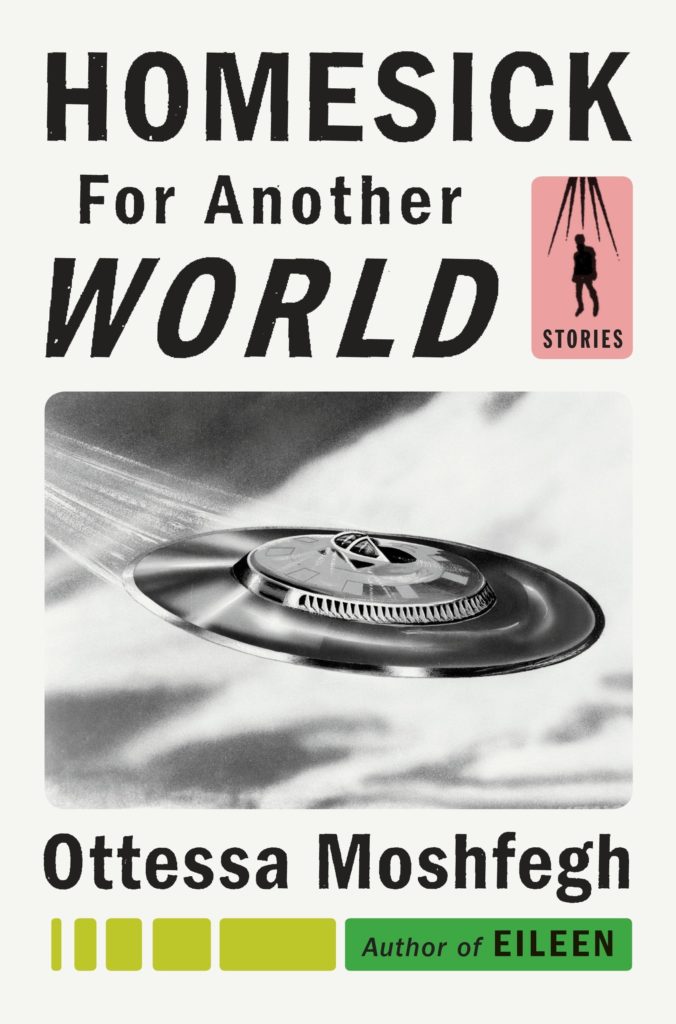 Ottessa Moshfegh, Homesick for Another World
Ottessa Moshfegh, Homesick for Another World
2017
Even before Ottessa Moshfegh had published her first book, people were calling her “the best writer of our generation.” I know this for a fact, because one of those people was me, and I was sure of it based on the short stories she’d been publishing in The Paris Review, including the wonderful (and frequently horrifying, in the best way) “Bettering Myself,” the opening story of Homesick for Another World, which won the Plimpton Prize in 2013.
Most of the stories in Homesick for Another World were originally published in The Paris Review—though a couple are from The New Yorker and Vice, one each from Granta and The Baffler, one original. They are all basically realist, if dark, psychological portraits, but there’s something fabulistic about them—Moshfegh pushes humanity to its logical extension, and the results are grotesque and poignant. It’s not quite surrealism—maybe I would call it slime-coated realism. She has a sharp, ironic eye, and a flat affect, which contributes to the sense of irreality, but she’s doing more than just rolling her eyes at her—often horrible—characters; she’s getting into the muck with them, and pulling us along for the ride.
It may not be my actual favorite, but the story I think about most often from this collection is “The Beach Boy”—which may be because, as a committed hypochondriac, I am in constant fear of dying the way Marcia does in this story, but also because of the expert unspooling of her husband once she’s gone. –Emily Temple, Senior Editor
***
Dissenting Opinions
The following books were just barely nudged out of the top ten, but we (or at least one of us) couldn’t let them pass without comment.
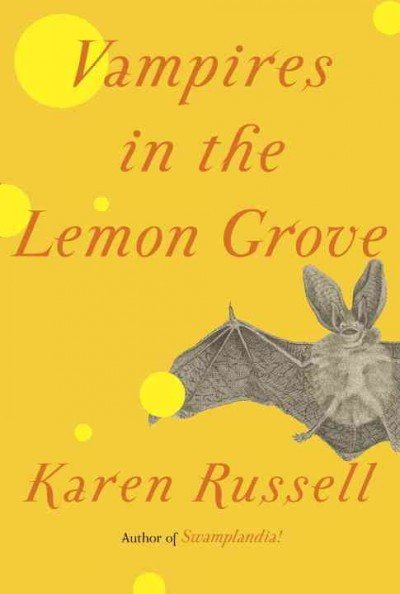 Karen Russell, Vampires in the Lemon Grove
Karen Russell, Vampires in the Lemon Grove
2013
The title short story of Karen Russell’s Vampires in the Lemon Grove is my favorite short story of all time, but the collection itself is mesmerizing. A friend, a fellow English teacher at the high school where I used to teach, first shared a copy with me when I had my seniors read Dracula, and I read it at my desk, towards the end of the day. I discovered that it’s a book that doesn’t so much draw you in as creep up on you. You don’t glide through it, you’ll burrow into it; you’ll start reading it, and by the time you’re finished, the lights in the department office will be out, dusk will have fallen outside, and all your colleagues and some passing students will have stood in front of you trying to get your attention and wave goodbye before giving up and walking out. You don’t simply finish this book, you are released from it. Materially speaking, anyway. It’ll still haunt you after you’re done. This might be because its stories are so tender, so perfectly painful—another reason might be because that they can be so genuinely creepy, so softly scary that you’ll find yourself rereading parts over and over, trying to experience the section more deeply to make sure that what you think is happening is really happening. And then, when it is finally done with you, you’ll walk yourself home in the dark, and it’s a good thing you’ll know the route by heart, because you won’t be able to think about where you’re going. –Olivia Rutigliano, CrimeReads Editorial Fellow
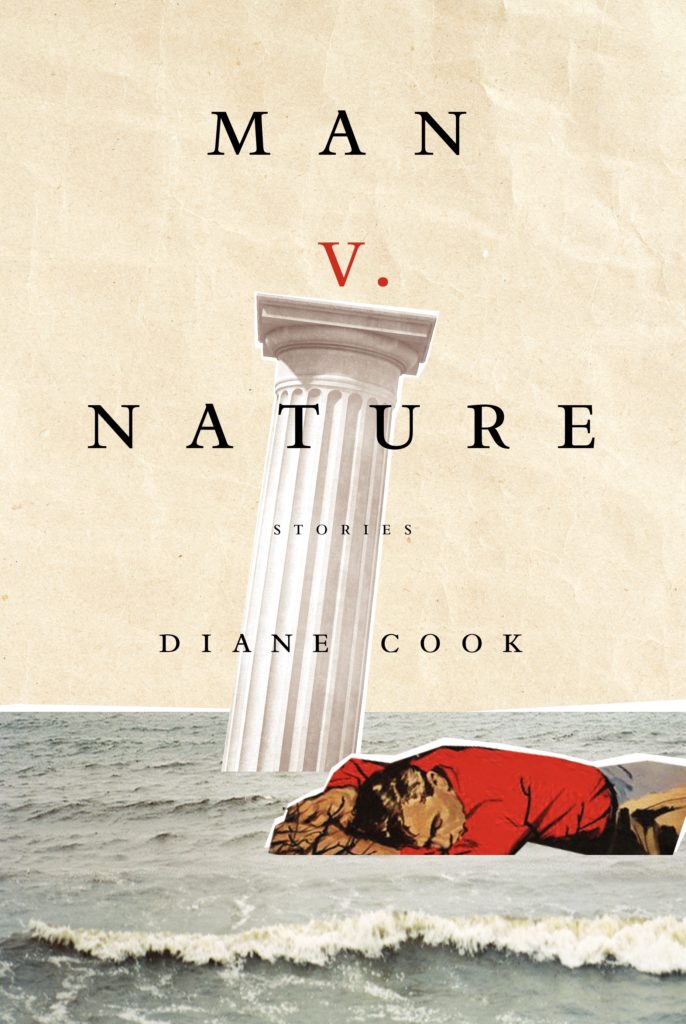 Diane Cook, Man V. Nature
Diane Cook, Man V. Nature
2014
When I first read this collection, during graduate school, I remember having to stop in the middle and take a break. The collection was making me feel bad, and almost panicky. It was just too good. It was so good that I felt confident there was no reason for me to ever write another word; Diane Cook had already done everything I was trying to do and more. Eventually, I got over it (the writer’s ego being a slippery but unquenchable fiend) and finished this surreal and glorious book of stories.
I mean, what to say: in “The Way the End of Days Should Be” one of the last survivors of what is apparently a watery apocalypse tries to keep out invaders as the seas rise around their (Doric columned) home: “This man in the nice suit asked for food and water, then tried to strangle me, choked back tears, apologized, asked to be let in, and when I refused, tried to strangle me again. When I managed to close the door on him, he sat on my veranda and cried.” Did I mention Diane Cook is hilarious? Especially at her darkest, she is a comedic genius. The title story is equally funny and equally bleak; it also involves water as an adversary, and also the men who used to be your friends. At least one of them, anyway.
In closing: where is the next book from Diane Cook? I’ve been waiting for years; it’s starting to feel unfair. Who knows what a woman might do without one? –Emily Temple, Senior Editor
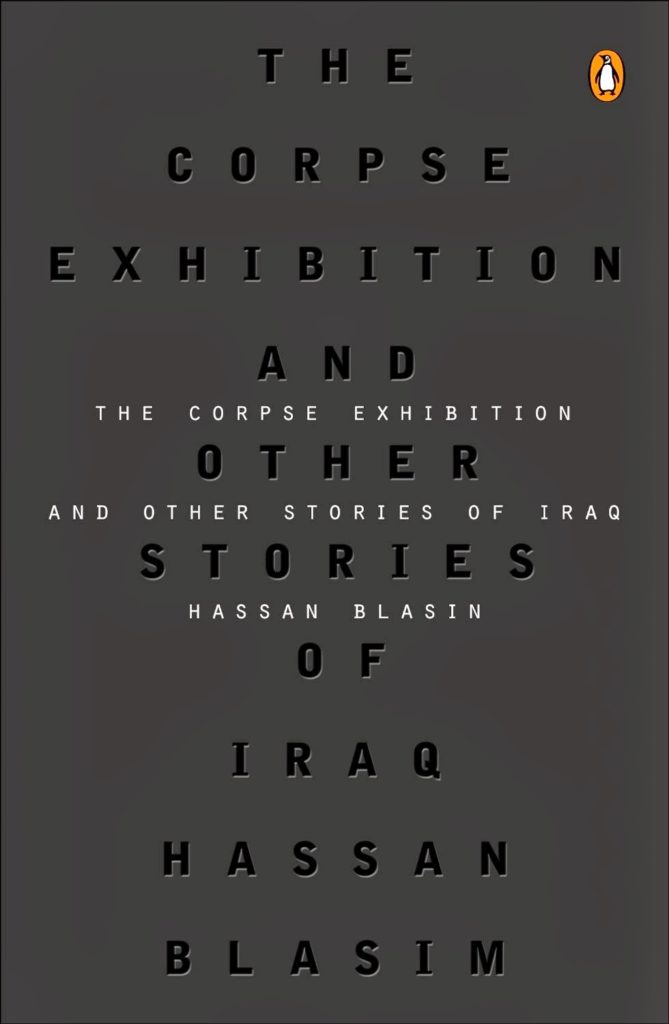 Hassan Blasim, tr. Jonathan Wright, The Corpse Exhibition
Hassan Blasim, tr. Jonathan Wright, The Corpse Exhibition
2014
It’s rare for a conflict to go on for so long that witnesses may begin to record its history before the conflict is over, and yet that is what has happened as the wars in Iraq and Afghanistan continue, and publishing does its duty to bring suffering into print. Hassan Blasim was a vocal critic of Saddam Hussein’s government, in exile in Finland for much of his literary career, so it makes sense that his story collection would explore the Iraqi expat experience as well as crafting stories immersed in the war itself; several stories are stranded between judging and defending those who have gotten out and who then, refuse to return. Whether Blasim is writing about the war itself or its many rippling effects, he brings a sardonic sensibility to his stories, parodying the language of bureaucracy and always pointing to the violence common to both order and chaos. This is essential reading for anyone who wants to understand both the war and the ongoing attempts to process the conflict through literature, and a necessary complement to the wide array of fiction by American veterans released over the past few years. –Molly Odintz, CrimeReads Associate Editor
Dorthe Nors, Karate Chop
2014
Karate Chop was the first of Dorthe Nors’ books to be available to the English-speaking world (translated from the Danish). It was pressed into my hands by the amazing Julie Buntin (author of Marlena) when she was my internship supervisor, back in 2014. She told me it was a perfect gem of a collection, and that I was going to love it. Boy oh boy was she right! Karate Chop is a compact powerhouse, with fifteen pithy stories (no more than a few pages apiece!) that pull back the curtain on everyday life to reveal something much more odd and sinister. (A few notable examples: after his wife goes to bed, a man obsessively falls down the online rabbit hole of female serial killers; two hunters agree to kill each other’s dogs in an exploration of male friendship; a young woman leaps from thought to thought, trying very hard to avoid thinking about something traumatic that’s happened. I could go on!) Dorthe Nors writes with such a dry, biting specificity. Her matter-of-fact tone makes you trust her. And then she pulls the rug out from under you in the best way! The situations she throws her characters (and her readers) into could only be conjured up by her. (The story about the hunters that hatch a plan to kill their dogs? It’s also a story about a failing marriage. But in a Dorthe Nors story, it has to be tangled up in this amazing way. Just surrender to the logic.) In a lot of ways, this is a collection about the ways we fail to connect to one another, and the mental and emotional acrobatics we partake in to avoid hurt. –Katie Yee, Book Marks Assistant Editor
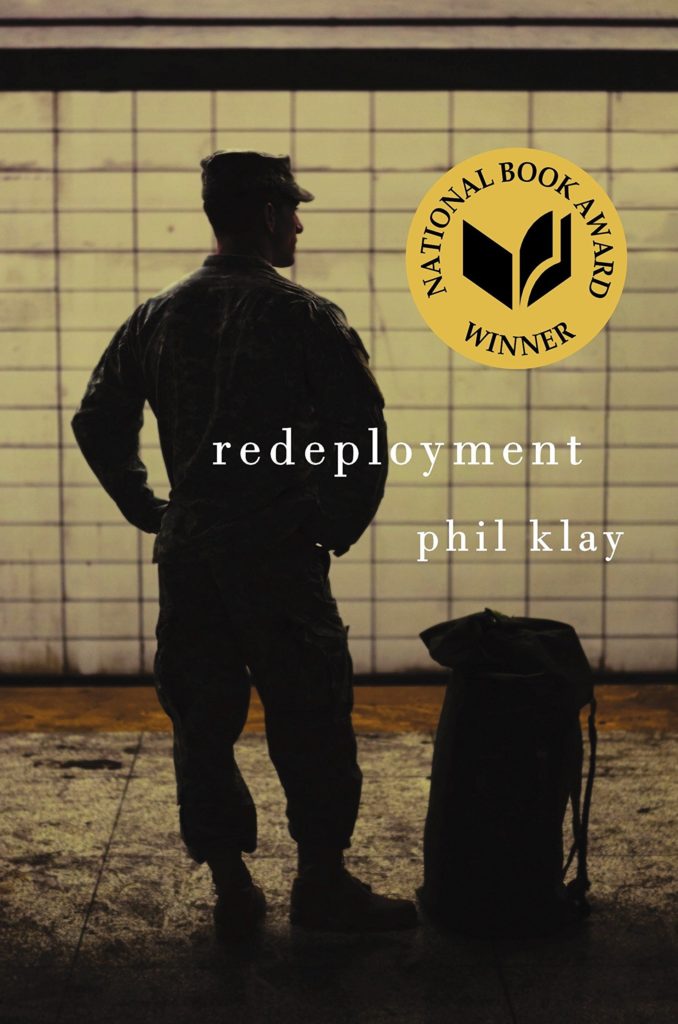 Phil Klay, Redeployment
Phil Klay, Redeployment
2014
Redeployment is a classic exploration of the veteran’s experience, going back and forth between stories immersed in the moment of trauma and those exploring the dislocating experience of return to a peacetime world after the disruptions of war – my favorite story in the collection details a philosophical confrontation between a veteran at college on the GI Bill and a student activist who feels threatened by him (and whom he, in turn, feels threatened by). Their attempt to understand each other is one of the best dialogue sequences I’ve ever come across, and symbolic of the book’s larger message of humanism, although some stories embrace a bleaker message of the dark comedy of errors and bureaucracy that is war. I’m including this on the list as the first of many works to be written by returning veterans – the Iraq and Afghanistan conflicts have had the dubious honor of being long enough for an entire generation to have returned home, enrolled in MFA programs, and published novels en masse as the war continues. If fiction is the first step in processing trauma, than perhaps this means we’re getting a head start—or perhaps, there’s just too much suffering in the world to wait for a thing to end before writing books about it. –Molly Odintz, CrimeReads Associate Editor
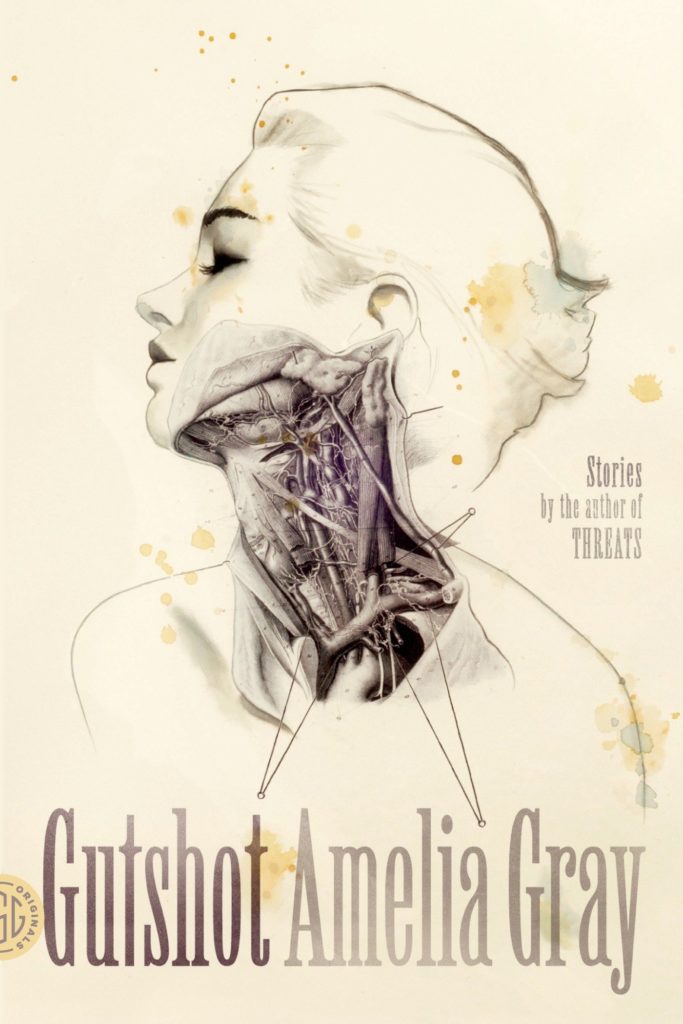 Amelia Gray, Gutshot
Amelia Gray, Gutshot
2015
In my former life as a bookseller, this one made its way around the story with hushed whispers and bated breath, furtively paged through and softly recommended in brief lulls between helping customers, perused at the registers as we yawned and waiting for the store to close, on the quiet second floor in the early hours of a Saturday morning, or in the deathly quiet of the children’s section in mid-week to a soundtrack of Muzac radio and the booms and thuds of near-by construction. You have to read this, we said to each other; start with the story in the middle, we commanded to friends and colleagues; don’t talk to me until after you finish reading it, we mock-warned to those who appeared on the fence about finishing.
What makes this one so special, in a sea of collections that each try their hardest to capture some kind of zeitgeist with sentences beautiful enough to guarantee that the era their contents define will be remembered? Amelia Grey is the grand-guignol heiress to Angela Carter, crafting grotesque body horror and immersed in the violence of everyday life, full of more blood, sugar, sex, and magic than a 90s-era record store. Although perhaps, given the matter-of-fact way her characters accept their bloody, inglorious fates, I should describe her as Angela Carter meets Etgar Keret, whose story collection The Bus Driver Who Wanted to be God ushered in a new era of magical realism grounded in the everyday, ordinary, and mundane. If art is meant to comfort the disturbed and disturb the comfortable, then Amelia Grey’s Gutshot is very high art indeed. –Molly Odintz, CrimeReads Associate Editor
Kelly Link, Get In Trouble
2015
I am here for literally everything Kelly Link writes (have you heard she’s writing a novel?)—after all, she is an official genius whose work combines fairy tale archetypes, horror tropes, pop culture references, and surrealist play with some of the finest literary writing around. I know, this isn’t as uncommon as it once was, but Link is the OG short story irrealist, and she’s also the best. People who haven’t read Kelly Link can’t really understand that they need Kelly Link in their lives, but they do. This is part of why I always think of her work as being a secret, like something only my friends and I know about and reference and pass around to one another and try to copy, a kind of shibboleth for a certain type of writer.
However, when I think this, I am wrong: not only did Link win a MacArthur, but her most recent collection, Get In Trouble, was a finalist for the Pulitzer Prize, and widely and well reviewed. The secret’s out. And well, fine, because I want (most) people to be happy. Like every Link collection, Get In Trouble is full of classics: all killer, no filler, as the kids—maybe once, one time, used to—say. “The New Boyfriend” is like something out of Grimm’s My So Called Life, “The Summer People” is mysterious, atmospheric masterpiece, and “Valley of the Girls” is a story that I do not fully understand, and never will, but that I read again every year and think about all the time. –Emily Temple, Senior Editor
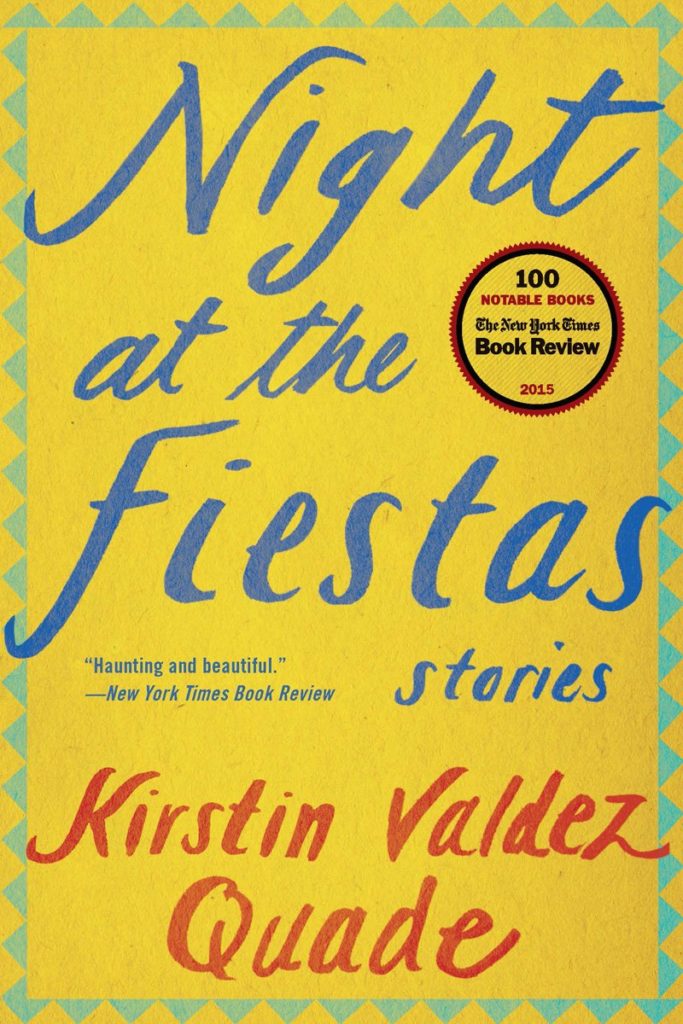 Kirstin Valdez Quade, Night at the Fiestas
Kirstin Valdez Quade, Night at the Fiestas
2015
Kirstin Valdez Quade’s debut collection, Night at the Fiestas, came out almost five years ago now, in early 2015, and it’s not overstating to say that it managed on a first reading to expand my conception of American literary fiction, what it could do, what a story collection could do, and the kinds of stories that could and should be told. Returning to the stories in the time since—especially to the visceral, driving “Five Wounds” and the haunting “Nemecia”—has only confirmed that feeling, that Valdez Quade is one of the most talented storytellers at work today. New Mexico—its landscapes, its cultures, its families—is the setting for her work, and the majority of the stories center around people dealing with the weight of everyday life, spiritual striving, and the deep, complex connections that bind them. In “Five Wounds,” a man reenacts the Passion of the Christ; in “Nemecia,” two girls reckon with a dark family legacy. Throughout the collection, the strange textures of sin, blood, and relations arise again and again. The stories are intense, finely observed works of realism, but they pulsate with a special kind of energy that seems to allow for an enhanced reality, another plane of possibility. A religious feeling, in short. It’s rare to find that kind of power or preoccupation in contemporary fiction. When you do, it’s a reminder of why we tell stories in the first place, of the kind of communal reckoning we’re undertaking when we explain our stories, our families, our pasts. –Dwyer Murphy, CrimeReads Managing Editor
Adam Johnson, Fortune Smiles
(2015)
I’m a little perplexed as to why more people haven’t read this book. Or, if they have, why it seems to have all-but disappeared from the Best Books of the Twenty-First Century conversation (despite having won the National Book Award for Fiction less than five short years ago). Perhaps the rapturous reception that greeted The Orphan Master’s Son, the grimly absurdist novel for which Johnson won the Pulitzer Prize three years previous, served to drown out his quieter follow-up. Perhaps it’s the fault of the book’s cheery cast of characters, which includes an uncomfortably sympathetic child-porn addict, an unrepentant former Stasi prison guard, a young mother with cancer, a pair of North Korean defectors, a hologram of a recently-assassinated US president, and a woman with advanced Guillain-Barré syndrome. Or perhaps it’s that every one of these six lengthy tales—dark, disquieting, and all the more unsettling for their subtle infusions of tenderness—leaves an indelible, but rarely pleasant, mark on the reader’s consciousness. As Lauren Groff wrote in her New York Times review: “Each of these stories plants a small bomb in the reader’s head; life after reading Fortune Smiles is a series of small explosions in which the reader—perhaps unwillingly—recognizes Adam Johnson’s gleefully bleak world in her own.” This is not an uplifting collection. It will illicit chuckles only as a means to further devastate. It will not make you feel good about yourself, about technology, about our ability to successfully navigate life’s random cruelties. But it will exhilarate. It will suck the breath from your lungs. –Dan Sheehan, Book Marks Editor
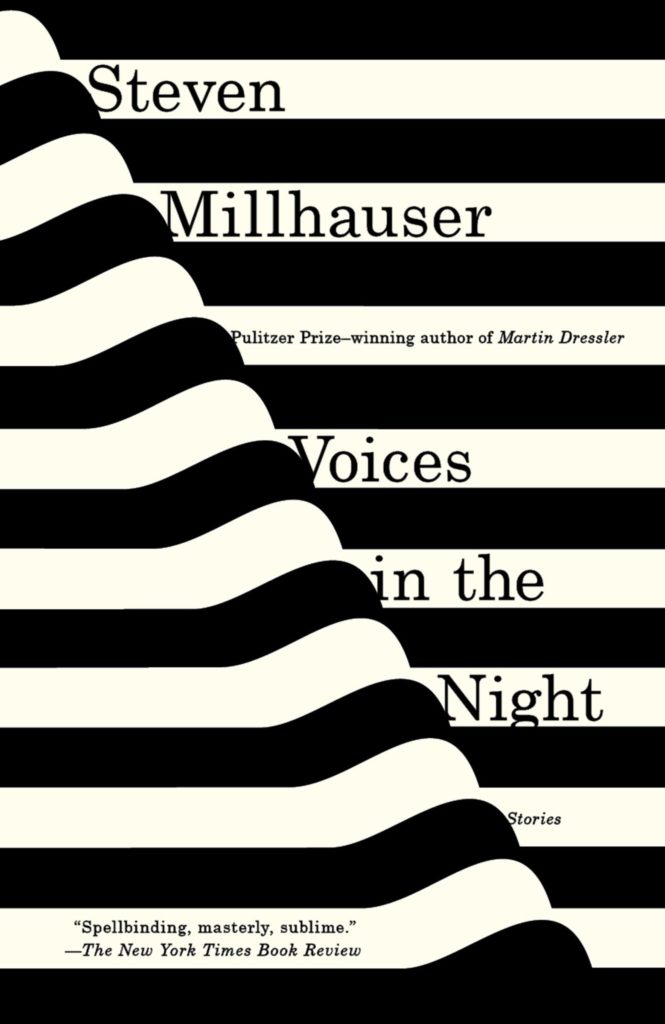 Steven Millhauser, Voices in the Night
Steven Millhauser, Voices in the Night
2015
I’ve never understood why Stephen Millhauser isn’t more widely read (at least in the United States—apparently he’s big in France, which makes sense, because the French tend to appreciate the finer things). Maybe it’s because his “most famous” book—Martin Dressler, which was awarded the Pulitzer Prize in 1997—is his least interesting. Listen, I love Millhauser, and I can easily imagine someone reading Martin Dressler, thinking “hmm, okay,” and then forgetting all about him forever. But no one should do this. Because Millhauser’s stories, on the other hand, are wonderful, weird things, steady and fantastical at once, as if Raymond Carver had developed a thing for ghosts and girls who die of laughter.
This latest collection contains some of my favorite stories from Millhauser’s long career, including the opener, “Miracle Polish,” which I won’t describe, but will tell you that I return to it regularly, and am moved every time. If you find that more frustrating than intriguing, I’ll tell you that at the beginning of We Others, Millhauser’s 2011 collection of new and selected stories (also considered for this list, naturally), he writes: “What makes a story bad, or good, or better than good, can be explained and understood up to a point, but only up to a point. What’s seductive is mysterious and can never be known. I prefer to leave it at that.”
So I’ll leave it at this: these stories are better than good. –Emily Temple, Senior Editor
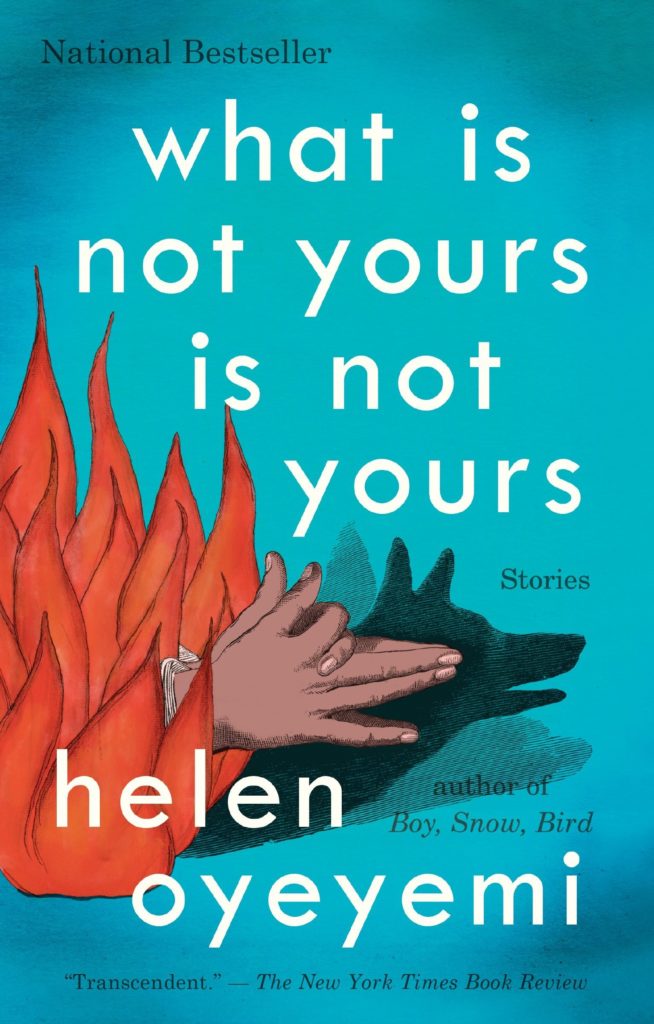 Helen Oyeyemi, What Is Not Yours Is Not Yours
Helen Oyeyemi, What Is Not Yours Is Not Yours
2016
Helen Oyeyemi’s writing is woven with imagination, complexity, and such fierce intelligence that I have always been thoroughly amused and fascinated with anything she writes. In her collection What Is Not Yours Is Not Yours, Oyeyemi showcases this talent by planting keys, hidden rooms, puppets, ghosts, magical libraries, and secret gardens which the reader follows, as if they were breadcrumbs, hoping they will lead to answers. Admirably, equal to Oyeyemi’s appetite for adventure is her commitment to attaining truth. In that way, she reminds me of storytellers like Angela Carter, Ursula Le Guin, and Jorge Luis Borges.
Embracing a voice uniquely her own, however, Oyeyemi toys with the reader with titles like “if a book is locked there’s probably a good reason for that don’t you think.” Then, she infuses that wryness with piercing emotion, as in the story “is your blood as red as this,” in which the narrator, uninhibited, observes a character at a party, “you had a string of fairy lights wrapped around your neck. I sort of understood how that would be comforting.” The narrator continues, “Sometimes I dream I’m falling, and it’s not so much frightening as it is tedious, just falling and falling until I’m sick of it, but then a noose stops me short and I think, well, at least I’m not falling anymore.” A signature of Oyeyemi’s creative talent is that she can begin a story from somewhere, drag the reader by the hand and then suddenly drop them into unknown territory.
What Is Not Yours Is Not Yours deserves a place on this list because each narrative is immersive, a complete universe onto itself. Each story flaunts a whole cast of diverse characters imitating life in the many comings-and-goings of people; it delves into historical moments, like the Spanish saint’s day, The Day of the Book and the Rose, just to tell the obscure story of some character affected by this moment in time. Though curiosity may launch an Oyeyemi story, the ultimate joy of it is that it’s all about connection, forged under unexpected circumstances by moments of pure synchronicity. –Eleni Theodoropoulos, Editorial Fellow
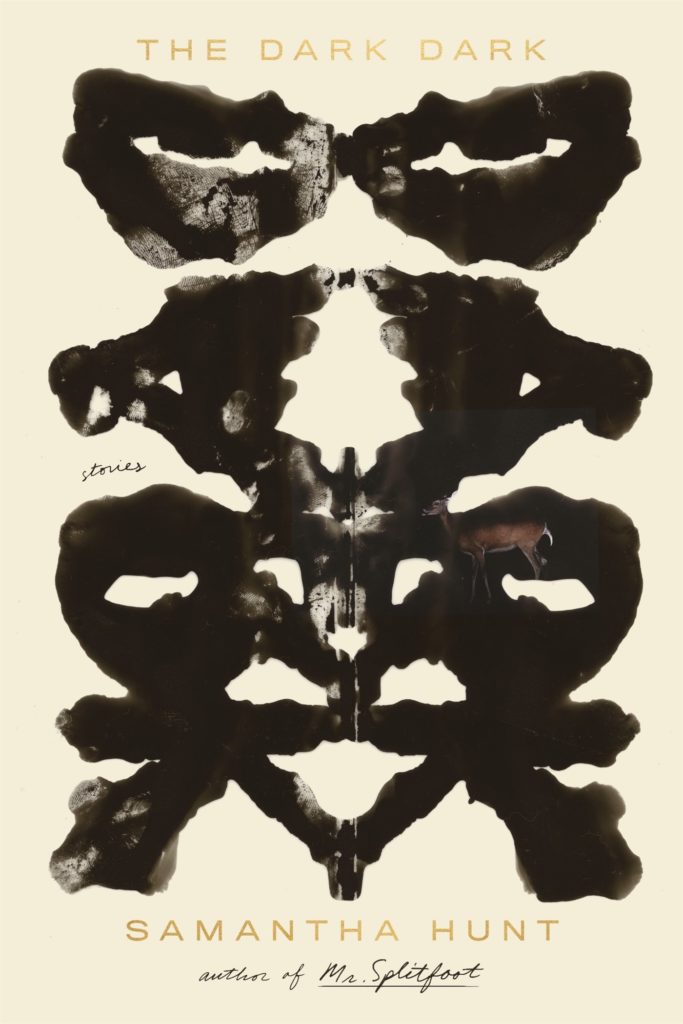 Samantha Hunt, The Dark Dark
Samantha Hunt, The Dark Dark
2017
This is Samantha Hunt’s first short-story collection, though her fourth book. She’s an eccentric, imaginative creator and a candid storyteller, often presenting slightly fantastical, vaguely supernatural scenarios frankly and unblinkingly. She can make the most far-flung ideas seem very real. The Dark Dark dials this tendency back down. The most common site of magic in these stories is actually the female body, which, she points out, always transforms itself and has the power to make life and to kill parts of itself and can turn women into endless new versions of themselves. The Dark Dark is about women, mostly, and about fear, loneliness, being a parent, losing a parent, becoming someone else, realizing you’re losing yourself. Despite the lack of literal magic, these stories are still shivery, still eerie, and still, when they need to be, dreamy. –Olivia Rutigliano, CrimeReads Editorial Fellow
***
Honorable Mentions
A selection of other books that we seriously considered for both lists—just to be extra about it (and because decisions are hard).
Danielle Evans, Before You Suffocate Your Own Fool Self (2010) · Brad Watson, Aliens in the Prime of Their Lives (2010) · Patricia Engel, Vida (2010) · Don DeLillo, The Angel Esmeralda (2011) · Charles Baxter, Gryphon (2011) · Colm Toíbín, The Empty Family (2011) · Can Xue, tr. Karen Gernant, Vertical Motion (2011) · Jamie Quatro, I Want to Show You More (2013) · Aimee Bender, The Color Master (2013) · Susan Steinberg, Spectacle (2013) · Rebecca Lee, Bobcat (2013) · Ramona Ausubel, A Guide to Being Born (2013) · Laura van den Berg, The Isle of Youth (2013) · Rivka Galchen, American Innovations (2014) · Naja Marie Aidt, tr. Denise Newman, Baboon (2014) · Lydia Davis, Can’t and Won’t (2014) · Stuart Dybek, Paper Lantern (2014) · Donald Antrim, The Emerald Light in the Air (2014) · Joy Williams, The Visiting Privilege (2015) · Thomas Pierce, Hall of Small Mammals (2015) · Jen George, The Babysitter at Rest (2016) · Rion Amilcar Scott, The Insurrections (2016) · Alexandra Kleeman, Intimations (2016) · James McBride, Five-Carat Soul (2017) · Viet Thanh Nguyen, The Refugees (2017) · Denis Johnson, The Largesse of the Sea Maiden (2018) · Jamel Brinkley, A Lucky Man (2018) · Lauren Groff, Florida (2018) · Xuan Juliana Wang, Home Remedies (2019) · Nana Kwame Adjei-Brenyah, Friday Black (2018) · Karen Russell, Orange World (2019), Edwidge Danticat, Everything Inside (2019).


